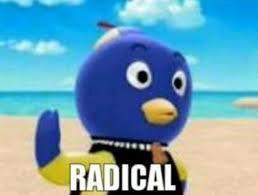
History, 22.02.2021 20:50 sierraaasifuent
THIS IS THE ANSWER, I GOT A 95%
Use the passage below to answer parts A, B, and C of the question that follows.
"Exactly a century ago, on April 24th 1915, Ottoman officials rounded up scores of Armenian intellectuals in Istanbul, most of whom were later murdered. What followed is still bitterly contested. According to the official Turkish version, perhaps 500,000 Armenians died, some while fighting alongside invading Russians against Ottoman forces and others as a regrettable side-effect of deportations that were understandable in the context of the times. But many scholars say that 1m–1.5m Armenians died, and that their deaths were a result of a deliberate campaign to eliminate the Ottoman empire’s only sizeable Christian population. Members of the Armenian diaspora want the events recognised as genocide. What marks genocide out from other mass killings, and why does it matter what word is used?
In 1948 the United Nations adopted a convention aimed at preventing and punishing genocide, which it defined as the ‘deliberate and systematic destruction, in whole or in part, of an ethnical, racial, religious or national group’. Getting agreement on the text involved compromises. Targeting victims because of their class, for example, was not classed as genocide: Stalin would hardly have signed if it meant being held to account for his mass slaughters of ‘middle peasants’ and the like.”
An excerpt from "What Counts as a Genocide,” by H. J., The Economist, April 24, 2015
a) Identify ONE way that the killing of Jewish people during the Holocaust fits the author’s definition of genocide.
b) Explain ONE specific historical example (outside of the author’s example and the example in prompt A) of an act of genocide, based on the author’s definition of genocide.
c) Explain ONE specific historical example of a mass killing that would not meet the author’s definition of genocide.
A) One way that the killing of Jewish people during the Holocaust fits the author’s definition of genocide is that, in the definition that is given, it specifically lists killing something for their religious and ethnic identities. Jewish people can be both a religious and ethnic group, as it is both fundamentally a religion, but coincides a lot with culture and tradition. So, by the author’s definition of genocide, the killing of Jewish people fit the author’s definition of genocide perfectly.
B) One specific historical example of genocide that fits the author’s definition of genocide is the Rwandan genocide. The Rwandan genocide was caused by an imbalance of power in the government between the Hutu and the Tutsi ethnic groups, and a genocide was carried out by the Hutu towards the Tutsi. By the author’s definition of genocide, that Tutsi were specifically targeted for the ethnic background, and were victims of genocide for that reason.
C) One specific historical example of a mass killing that would not meet the author’s definition of genocide is the mass murders that Joseph Stalin carried out while he was in charge of the Soviet Union. He killed many people, and this would be classified a genocide if it were not for the fact that he specifically targeted these people based on what class they were or if they were disloyal to the government. The UN only recognizes a genocide as the government purposefully persecuting people based on their ethnicity, race, religion, or nationality, and it has no mention of class structure or of political views. The only reason that this was the case for the official UN definition is that Stalin, as a member of the UN, would not agree to the definition if he were to be held accountable for his crimes.

Answers: 2
Another question on History

History, 22.06.2019 01:30
Describe the indian removal from north georgia. was the evacuation carried out according to plan? explain.
Answers: 1

History, 22.06.2019 03:10
Capitalism competed with dominance in the twentieth century communism merchantilism free enterprise feudalism
Answers: 1

History, 22.06.2019 03:30
Who was the redcoat leader (major john pitcairn,militias, ralph waldo emerson, concord, captain john parker)
Answers: 2

History, 22.06.2019 06:00
1. how did the works progress administration (wpa) contribute to the cultural development of american cities? a. by paying artists to create new works for public spaces b. by granting scholarships to underprivileged students to study art c. by sponsoring cultural exchanges with musicians from other countries 2. which of the following best describes the effect of the new deal on the great depression? a. the new deal eased the effects of the great depression. b. the new deal alone ended the depression. c. production rates during the great depression only fully recovered as the united states prepared to enter world war ii.
Answers: 2
You know the right answer?
THIS IS THE ANSWER, I GOT A 95%
Use the passage below to answer parts A, B, and C of the question t...
Questions









Mathematics, 11.12.2019 02:31










Mathematics, 11.12.2019 02:31




